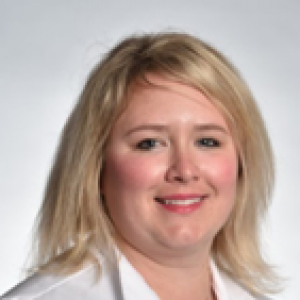Understanding contributing factors to addiction is crucial to treatment


LEXINGTON It may be years before we know the full extent of the COVID-19 pandemic’s impact on addiction treatment. We do know that the disease of addiction continues to claim lives, and that people who need treatment are not getting it.
Opioid use disorder has been in the spotlight because of the staggering number of associated overdoses, which only increased during the pandemic. However, it is not the only addiction that has contributed to morbidity and mortality in the U.S. population. The importance of alcohol use disorder (AUD) as a major player in deaths related to addiction is overlooked. Effects of alcohol use disorder are more subtle because the acute overdose scenario seen with opioids is usually not the case with alcohol. Alcohol is the 3rd leading preventable cause of death in the United States behind tobacco, poor diet, and physical inactivity according to the National Institute for Alcohol Abuse and Alcoholism (NIAAA).
NIAAA reports that high-intensity drinking is an emerging trend. High intensity drinking is defined as consuming alcohol at 2-3 times the gender specific thresholds for binge drinking. People who consumed alcohol at twice the threshold of gender specific binge drinking were 70 times more likely to have an ER visit than those who did not binge drink. People who consumed alcohol at 3 times the usual threshold for binge drinking were 93 times more likely to have an alcohol related ER visit.
The 2020 NSDUH (National Survey of Drug Use in Households) estimated that 712,000 adolescents between the ages of 12 and 17 met DSM V criteria for AUD. The number of initiates (new users) of alcohol use in the 18–25-year-old age group went up in 2020 compared to 2019 as did the percentage of past year initiates of alcohol use generally. The largest increase in initiates of alcohol use in that category occurred in the 16–17-year-old age group, but a larger percentage of the 14–15-yearolds who did use over the past year were new users. Of females between ages 12 and 17 who used alcohol in 2020, more were new users compared to males who used. It isn’t clear what effect the pandemic had on the increase in alcohol use among adolescents. According to the 2019 NSDUH, about 7.3% of adults who met criteria for AUD in the past year got any treatment in that year. Less than 4% of people with AUD were prescribed a medication approved by the FDA for AUD. People suffering from substance use disorders may not receive treatment for several reasons including lack of perceived need of treatment, fear of stigma, and inability to access evidence-based treatment.
At Risk Populations
There are some populations who may be more seriously at risk, for example seniors. According to the 2020 NSDUH, in the 50 or older age category, 3,433,000 met criteria for illicit drug use disorders and 8,297,000 met criteria for AUD. Interestingly, of that group, the 65 and over group had the largest share of AUD as well as both AUD and illicit drug use disorders. People who previously did not meet criteria for AUD may increase their drinking and meet criteria even after 65. Clinicians should be tuned in to this potential change. Alcohol screening can be useful here. Another issue affecting seniors on MOUD (medication for opioid use disorder) is that of placement in nursing homes. Many nursing homes won’t accept patients on MOUD. So, what happens then?
People with co-occurring disorders are another at-risk group. In 2020, 2.7% of adolescents between 12 and 17 had a coocOVER 110,000 VISITS! Colleen Ryan, MD Danielle Anderson, MD Headlines ISSUE #143 5 curring MDE (major depressive episode) and SUD (substance use disorder). In 2020, 6.7% of adults 18 or older had any mental illness and an SUD and 2.2% had a co-occurring serious mental illness (such as schizophrenia or bipolar disorder) and SUD. Only 5.7% of adults with co-occurring SUD and any mental illness received both SUD and mental health treatment. Only 9.3% of adults with co-occurring serious mental illness and sub – stance use disorder received both substance use and mental health treatment.
The American Academy of Addiction Psychiatry recommends that substance use disorders and psychiatric disorders be treated concurrently. Some of the more common mental health issues are depression, bipolar disorder, anxiety, and attention-deficit dis – order, among others. If not addressed, these untreated disorders can lead to relapse and less engagement in treatment
Those who are incarcerated constitute another vulnerable group. Very few prisons allow inmates to have controlled substances. Therefore, when someone on suboxone or methadone is imprisoned, they can have significant withdrawal symptoms which may not be addressed. Often, their Medicaid insurance, if they had it to begin with, is stopped because of their imprisonment. Getting it restarted can take months. Frequently they are simply released to the street with no follow up. Since they do not have insurance, they can’t get back into treatment. Furthermore, the presence of an addiction which could be contributing to the inmate’s criminal activity, may not be detected while the person is incarcerated, so no treatment referrals are made at the time of release.
Stigma and Co-morbidities
Patients suffering from addiction often have multiple medical co-morbidities. Stigma persists in the medical profession, unfortunately, and patients with substance use disorders often describe negative interactions with providers when disclosing information regarding their use of substances, even if they are currently in treatment. People suffering from addiction face unique barriers to receiving both routine medical care and treatment for substance use disorders. Patients are acutely aware of the attitudes of office staff and medical professionals towards them. The first step towards equitable care and access to SUD treatment is for the medical community to look at its own internal biases towards people with substances use disorders and why these exist. Only then can we understand how to exact change in the stigma and improve access to care for patients with SUD.
REFERENCES:
- Alcohol Facts and Statistics. NIAAA.nih.gov.
- The NSDUH Report. Office of Applied Studies, Substance Abuse and Mental Health Services Administration, Dept. of Health & Human Services. for substance use disorders. Patients are acute – ly aware of the attitudes of office staff and medical professionals towards them. The first step towards equitable care and access to SUD treatment is for the medical community to look at its own internal biases towards people with substances use disorders and why these exist. Only then can we understand how to exact change in the stigma and improve access to care for patients with SUD.
ABOUT THE AUTHORS:
Colleen Ryan, MD, received her MD from the UofL School of Medicine. She completed a psychiatric residency at the University of Michigan, Ann Arbor. Most of her career has focused on general psychiatry, both inpatient and outpatient. In January 2018, she became certified in addiction medicine through the American Board of Preventive Medicine. She retired from the UofL department of psychiatry in 2018 and is currently working part-time at 2nd Chance Center for Addiction Treatment and for Porter Starke Community Mental Health Center
Danielle Anderson, MD, received her MD from the University of South Carolina. She completed her family medicine residency in the UK family medicine rural track in Morehead, Kentucky. She completed her addiction medicine fellowship at UK and is now an assistant professor in the psychiatry department. She works full time as an addiction specialist.

